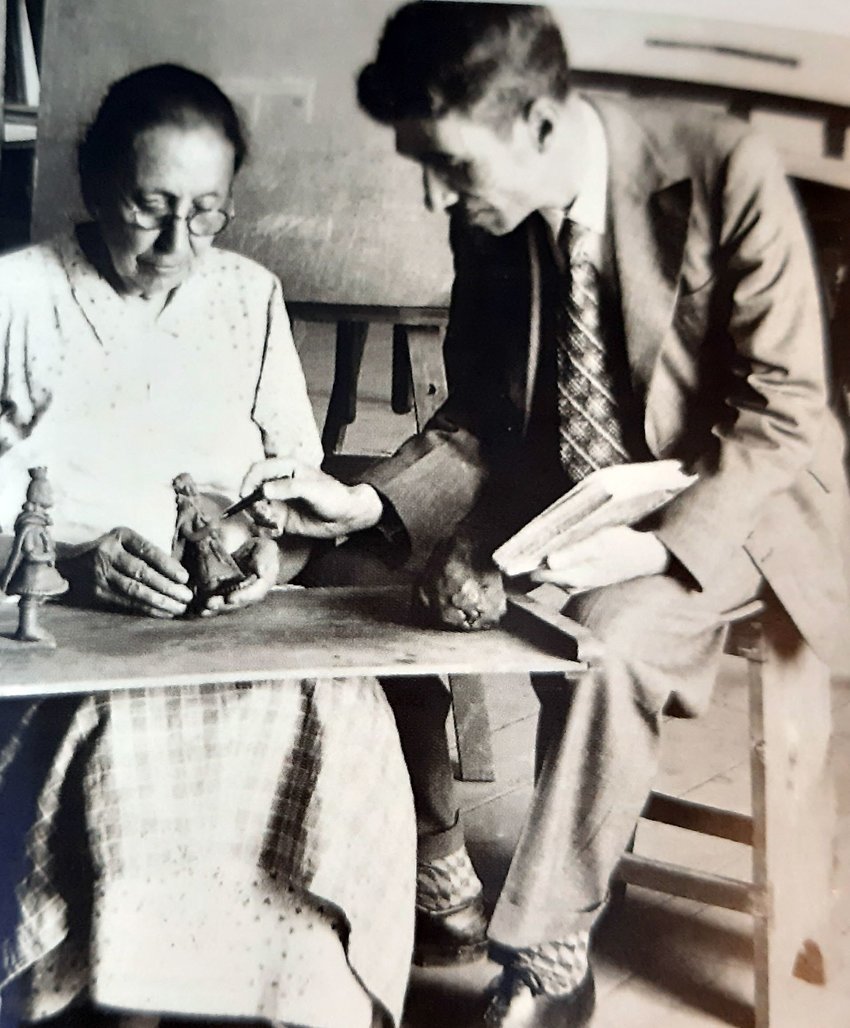Born in the parish of Mafamude, in Vila Nova de Gaia, on 11 April 1892, the sculptor and teacher José Maria de Sá Lemos was the grandson of Teixeira Lopes (father), and the son of Adelino Augusto de Sá Lemos and Emília Teixeira Lopes de Sá Lemos (daughter of José Joaquim Teixeira Lopes).
Emília Teixeira Lopes married Adelino Sá Lemos, who specialised in bronze casting, having collaborated with the Teixeira Lopes (Father and Son) and created a successful company in this field. It’s worth noting that Emília studied at the Academia Portuense de Belas Artes, which reveals her father’s open-mindedness and modernity at a time when it was rare for women to study in higher education. One of her descendants is the sculptor José Maria Sá Lemos.
‘He studied sculpture at the Academia Portuense de Belas Artes and was a teacher and director of the Vila Nova de Gaia Industrial and Commercial School (now the António Sérgio Secondary School), director of the António Augusto Gonçalves Industrial School in Estremoz between 1932 and 1945, and taught at the Infante D. Henrique Industrial School in Porto from 1945.
During the years he lived in Estremoz, he made an important contribution to the recovery of the Estremoz figures, which were then in decline, by getting Ana da Silva, known as Aunt Ana das Peles, to pass on her knowledge. This knowledge was then passed on by the master potter Mariano da Conceição (1893-1940) from Olaria Alfacinha (1868-1995), founded by his grandfather Caetano Augusto da Conceição.
With the artist Mariano da Conceição, in the 1940s Sá Lemos conceived the famous Figural Altar Nativity Scene in Estremoz clay, which combines the tradition of nativity scenes with that of popular saints’ thrones, thus creating a new piece that today is one of the most representative of the local clay aesthetic and of Portuguese handicrafts in general.
On 20 April 2015, the Production of Figurines in Estremoz Clay was inscribed on the National Inventory of Intangible Cultural Heritage, at the proposal of the Municipality of Estremoz, thus continuing the process of valuing and safeguarding this heritage initiated by the Gaian sculptor, a disciple of António Teixeira Lopes. Finally, on 7 December 2017, the Production of Figurines in Estremoz Clay was inscribed on the Representative List of the Intangible Cultural Heritage of Humanity’.
Sá Lemos wrote a short but significant article full of tenderness and admiration for his grandfather Teixeira Lopes (Father), which is an essential testimony from someone who was close to him and witnessed his work.
José Joaquim Teixeira Lopes (1837-1918), also known as Teixeira Lopes (Father), dedicated himself from a very early age to creating miniatures in fired clay, representing popular customs that constituted a small but significant area among the many that his multifaceted artistic production covered.
The proliferation of figurines and groups numbered in the dozens and, by focusing on quality, it was able to face and win over the vast competition that invaded a market with limited artistic appetites.
His main source of inspiration was his observation of the customs, costumes, professions, typical characters, whether they were humorous or engaged in playful activities, from various regions of the country, mapping out the soul of the Portuguese people.
Addressing his grandfather, Sá Lemos wrote: “You, who knew your role models to the core, reproduced them by talking to them, even when they were absent, because you had them inside you, in your heart: look at that “Aguadeiro”, the popular Tanagra from the longing R. do Laranjal, the one who brought you water every day and talked to you, the one you cured of a bad cold with an application of nettles.”

